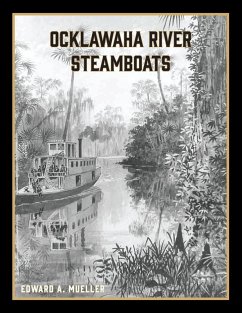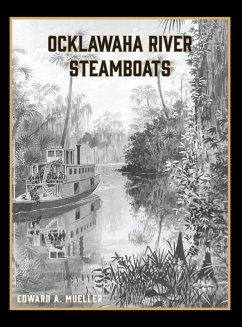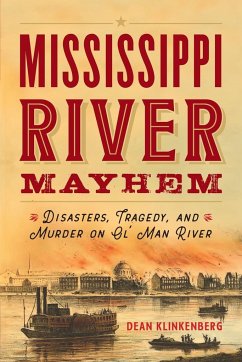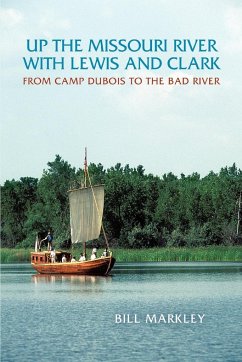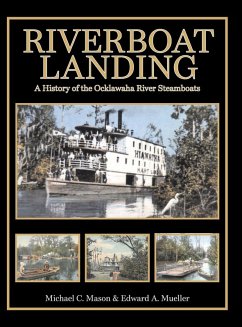
Smoke Up the River
Steamboats and the Arkansas Delta
Versandkostenfrei!
Versandfertig in 1-2 Wochen
17,99 €
inkl. MwSt.

PAYBACK Punkte
9 °P sammeln!
The Mississippi River is said to run fast and deep. This book shares one characteristic, but not the other. It is not a study of steamboats in great depth, from the diameter of smokestacks on each vessel to the maximum pressure tolerated by various boilers. Rather, it is designed to provide an easily accessible overview of steamboats that in one way or another had ties to what is called the Arkansas Delta. Brief commentary about individual boats is included as well as historic context when a noteworthy one exists. Sections include river craft prior to the advent of steamboats, antebellum boats...
The Mississippi River is said to run fast and deep. This book shares one characteristic, but not the other. It is not a study of steamboats in great depth, from the diameter of smokestacks on each vessel to the maximum pressure tolerated by various boilers. Rather, it is designed to provide an easily accessible overview of steamboats that in one way or another had ties to what is called the Arkansas Delta. Brief commentary about individual boats is included as well as historic context when a noteworthy one exists. Sections include river craft prior to the advent of steamboats, antebellum boats, Civil War vessels, and post-war steamers from 1870 to 1899. The story ends with the century, a somewhat arbitrary conclusion, but railroads and other means of transportation and shipping dominated by then. By 1900, riverboats usually picked up and delivered cargo at towns and commercial centers and not at plantation landings. Most information concerning the 1870s comes from typed pages in several binders compiled by William H. Tippitt and located at the Phillips County Library in Helena-West Helena, Arkansas. A former river pilot and newspaper columnist, Tippitt became an informal authority on river matters. He admits in introductory comments from April 1967 that his spelling is "atrocious," and he "abhors" proof reading. These are true. Additionally, attribution sometimes is as muddy as the big river or not included at all. Due to concerns about structure, coherence, and length, material in this book is sometimes edited, but with original intent maintained. Tippitt's compendium itemizes steamers built, destroyed, or noteworthy during the 1870s. Citations direct readers to his manuscript pages and to other sources as well. Frequently used resources for boat lists are identified by author and page number. Coverage of the 1870s is longer than other periods due to the volume of material. Other key resources include Way's Packet Directory, 1848-1994; Lloyd's Steamboat Directory and Disasters on the Western Waters; Fifty years on the Mississippi or Gould's History of River Navigation, and Steamboats and Ferries on the White River: A Heritage Revisited. In instances where sources provide different versions of events, each is included without an attempt to referee unless a clear winner is evident. Though the focus of this book is on the Arkansas Delta, hereafter called the Delta, some exceptions are made. Locations such as Little Rock, Arkansas are included when central to the story though technically beyond this book's geographic scope. Some ongoing peculiarities deserve mention. Tellers of riverboat tales tended to take liberties with spelling, such as the frequent merging of two words into one -- "wharfboat" for example. They are allowed this privilege in order to keep usages consistent throughout. When possible and appropriate, the year of a boat's construction, usually the year of first documentation, follows its name in parenthesis. Popular boat names might appear on several different vessels, but only those with Arkansas connections are included. Finally, readers should keep in mind that with respect to the rivers, particularly the Mississippi, what was true one day may not have been the next. "Old Man River" stayed hungry, constantly devouring chunks of land to whet his appetite.




